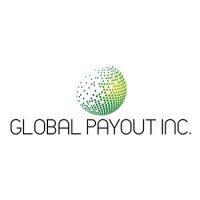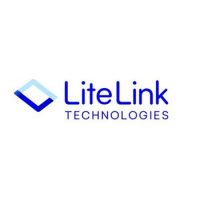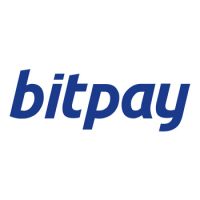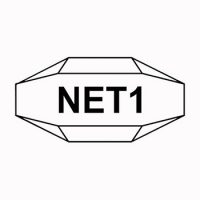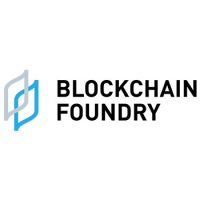Blockchain
Blocks & Headlines: Today in Blockchain – April 9, 2025 | Octane, Mantra, Commerce Bill, VIP Bybit

Introduction: The Ever-Evolving Landscape of Blockchain and Cryptocurrency
In today’s digital revolution, blockchain technology and cryptocurrency continue to lead the charge in transforming finance, governance, and digital identity. On April 9, 2025, a series of pivotal developments have further cemented blockchain’s role as a game changer in the technology sphere. From innovative funding rounds that promise to enhance security in the crypto space to legislative moves designed to integrate blockchain into commerce and democratic processes, the headlines signal both opportunity and challenge.
This edition of Blocks & Headlines offers an op‑ed-style analysis of the day’s most significant blockchain and crypto news. We delve into the implications behind a Winklevoss‑backed startup raising millions to combat blockchain hacks using AI, Mantra’s unveiling of a massive $108 million fund aimed at boosting blockchain projects, a contentious commerce blockchain bill debated in a House Committee, a forward‑thinking proposal to use blockchain for fair elections in New York, and an exclusive industry report partnership between VIP Bybit and Sosovalue.
With keywords such as blockchain, cryptocurrency, Web3, DeFi, and NFTs serving as the cornerstone of today’s discussion, our comprehensive briefing explores the ramifications of these announcements on industry players, regulatory frameworks, and the broader digital economy. Whether you are a seasoned investor or an enthusiastic blockchain advocate, the trends we examine here will provide you with critical insights into where the industry is headed and how today’s developments might influence tomorrow’s digital landscape.
Let’s embark on this journey into the heart of blockchain innovation, dissecting each breakthrough and discerning the narratives that will shape the future of decentralized technologies.
1. Winklevoss-Backed Octane: A Multimillion-Dollar Boost Against Blockchain Hacks via AI
A New Frontier in Blockchain Security
One of the most compelling headlines today comes from Octane, a blockchain security startup proudly backed by the Winklevoss twins. Octane has successfully raised millions to further develop its AI‑powered solution designed to combat the increasing prevalence of blockchain hacks.
Source: Decrypt
Octane’s innovation integrates advanced artificial intelligence algorithms with robust blockchain monitoring to detect anomalous patterns and potential security breaches in real time. As cybercriminals refine their methods, the blockchain community has come to demand more proactive security measures that not only respond to attacks but anticipate them. Here, Octane’s recent funding injection is not merely a testament to investor confidence—it represents a strategic move to fortify blockchain ecosystems across the globe.
The Technology: AI and Blockchain Security Converge
At the core of Octane’s technology is an AI engine that continuously scans blockchain transactions and smart contract executions. By leveraging machine learning and predictive analytics, Octane’s system is capable of identifying irregularities that may indicate an impending hack or a breach attempt. The company’s approach is inherently proactive, using pattern recognition to flag suspicious behavior before it escalates into a full-blown attack.
This approach holds particular importance in an industry where the decentralized nature of blockchain can sometimes present challenges in terms of centralized oversight. Instead of relying on reactive measures, Octane’s solution is built on the premise of continuous learning—improving its detection capabilities with each transaction processed. Such an innovation not only reduces the risk for investors and users but also raises the overall standard of security within the blockchain ecosystem.
Implications for the Industry
The successful raise by Octane signals more than just a vote of confidence from the investor community; it highlights a broader recognition of security as a crucial pillar of blockchain adoption. With cyber threats becoming more sophisticated, the need for AI-enhanced security measures is now undeniable. For startups and established players alike, Octane’s technology offers a blueprint for integrating advanced algorithms into everyday blockchain operations.
From a strategic perspective, the infusion of capital will enable Octane to expand its research and development team, optimize its technology stack, and forge strategic partnerships with other players in the blockchain and cybersecurity domains. By setting a new standard in how blockchain security is approached, Octane is poised to not only protect digital assets more effectively but also pave the way for further innovations in AI and decentralized security applications.
Opinion: Strengthening Blockchain’s Resilience
The funding success of Octane underscores an urgent industry need—security cannot be an afterthought in the fast-paced world of blockchain. As hacks and fraudulent schemes continue to challenge user confidence and market stability, solutions like those offered by Octane present a critical lifeline for the entire ecosystem. The combination of artificial intelligence with blockchain security is a forward-thinking development that could revolutionize how decentralized networks guard against emerging threats.
For investors and industry participants, Octane’s journey is a reminder that robust security measures are not simply a technical advantage—they are a strategic necessity. In an environment where trust is paramount, technologies that enhance security will undoubtedly drive adoption and foster long-term growth.
2. Mantra’s $108M Fund: Fueling the Future of Blockchain Projects
Empowering Innovation Through Significant Capital Investment
Another standout story comes from Mantra, which recently unveiled a groundbreaking fund totaling $108 million designed to boost promising blockchain projects.
Source: Bitcoin.com
Mantra’s initiative is aimed at nurturing innovation throughout the blockchain ecosystem by providing critical early-stage funding. The fund is structured to support projects that span various segments of the blockchain industry, including decentralized finance (DeFi), non-fungible tokens (NFTs), and enterprise blockchain solutions. By allocating substantial capital to these high-potential projects, Mantra is positioning itself as a key catalyst for technological breakthroughs and ecosystem growth.
Driving Growth in a Competitive Ecosystem
The creation of such a sizeable fund is particularly noteworthy given the increasingly competitive nature of blockchain innovation. Startups in the space often face significant financial and technical hurdles in bringing groundbreaking ideas to fruition. Mantra’s $108M fund alleviates some of those challenges by not only providing capital but also offering strategic guidance and industry connections to help projects navigate the complexities of the market.
Moreover, the fund’s broad mandate reflects an understanding that blockchain technology’s potential extends far beyond cryptocurrencies. By targeting projects in Web3 infrastructure, decentralized applications (dApps), and even digital identity management, Mantra is poised to fuel a diverse array of innovations that could redefine how information and value are exchanged in the digital age.
A Catalyst for Change
The implications of Mantra’s fund stretch far beyond immediate financial support. This initiative represents a broader trend in the blockchain industry, where institutional investors and venture capitalists are increasingly betting on the transformative power of decentralized technology. With significant capital backing innovative projects, the industry is likely to witness a surge in novel applications, improved scalability solutions, and more secure network protocols—all of which will contribute to a more mature and resilient blockchain ecosystem.
Opinion: Investing in the Future of Decentralization
Mantra’s bold financial commitment is a clear indicator that the blockchain sector continues to generate immense interest among investors. As technological advancements accelerate, projects that receive the necessary funding are likely to overcome common developmental hurdles and achieve wider adoption. For the industry as a whole, this influx of capital not only fosters innovation but also helps in establishing new standards for transparency, efficiency, and scalability.
Such initiatives also challenge traditional financial models by proving that decentralized solutions can attract major investment. The success of these projects will further validate the potential of blockchain to disrupt conventional systems in finance, supply chain management, healthcare, and beyond.
3. Commerce Blockchain Bill: Legislative Push in the House Committee
The Convergence of Law and Technology
Legislative developments have also been making headlines, as a new commerce blockchain bill is currently under scrutiny in a House Committee.
Source: FedScoop
This proposed legislation aims to integrate blockchain technology into commerce-related applications by promoting transparency, reducing fraud, and enhancing data security in supply chain and financial transactions. The bill is part of a broader government initiative to modernize outdated regulatory frameworks and embrace the potential of decentralized technologies.
The Details of the Bill
The commerce blockchain bill outlines various provisions designed to create a favorable regulatory environment for blockchain adoption within both public and private sectors. Key aspects of the legislation include:
-
Enhanced Transparency: Mandating the use of blockchain for recording and verifying commerce transactions, thereby reducing instances of fraud and data manipulation.
-
Data Integrity: Strengthening the framework for data sharing between stakeholders in supply chains and financial markets through immutable record-keeping.
-
Incentives for Adoption: Proposing tax benefits and grants for businesses that integrate blockchain solutions, encouraging early adoption of the technology.
-
Regulatory Oversight: Establishing oversight mechanisms to ensure that blockchain implementations meet security and privacy standards, protecting consumers and businesses alike.
The bill has ignited a robust debate among lawmakers, industry experts, and privacy advocates alike. On one hand, proponents argue that blockchain can revolutionize commerce by streamlining operations and safeguarding sensitive data. On the other hand, critics caution that insufficient regulatory clarity might expose consumers to unforeseen risks and hinder innovation through over-regulation.
Implications for the Industry
If passed, the commerce blockchain bill could create significant momentum for blockchain adoption in the commercial sector. Companies would be incentivized to adopt blockchain technologies that offer enhanced transparency and security in transactions, thereby driving widespread implementation across diverse industries—from retail and logistics to finance and healthcare.
Furthermore, the legislative backing of blockchain initiatives signals governmental recognition of the technology’s transformative potential. This support could encourage further investment and partnerships between public institutions and private enterprises, ultimately leading to a more integrated and secure digital economy.
Opinion: Bridging Innovation and Regulation
The commerce blockchain bill represents a critical intersection between technological innovation and regulatory oversight. As governments strive to create frameworks that support blockchain adoption while protecting public interests, such legislative efforts will determine the pace and direction of industry growth. It is essential for policymakers to strike a balance that encourages innovation without sacrificing consumer protection—a challenge that will undoubtedly shape the future of blockchain governance.
For industry stakeholders, keeping a close eye on the legislative process and engaging with policymakers will be key to ensuring that the regulations foster a climate conducive to innovation rather than hindering progress.
4. Blockchain for Fair Elections: New York’s Legislative Proposal
A Digital Leap Toward Transparent Elections
In a pioneering move toward political transparency and integrity, a new legislative proposal in New York is advocating for the use of blockchain technology to ensure fairer elections.
Source: CryptoTimes
This proposal seeks to harness the inherent strengths of blockchain—immutability, transparency, and security—to address concerns related to vote tampering, fraud, and data manipulation. By incorporating blockchain into the electoral process, proponents argue that every vote can be securely recorded and verifiable, thus reinforcing public trust in the democratic process.
How Blockchain Can Revolutionize Voting
Blockchain’s decentralized ledger technology offers unique benefits for the electoral system. Each vote, once cast, is recorded on a digital ledger that cannot be altered or deleted, ensuring that every citizen’s voice is protected from fraudulent interference. In addition, blockchain enables real-time verification of votes, making the electoral process more transparent and efficient.
Key benefits of integrating blockchain into voting include:
-
Enhanced Security: Immutable records significantly reduce the risk of vote tampering.
-
Increased Transparency: Blockchain provides a clear, auditable trail of votes, boosting confidence in the electoral system.
-
Cost Efficiency: Automating the vote recording process could reduce costs associated with traditional voting infrastructures.
-
Real-Time Auditing: Instant verification and auditability of votes improve the overall integrity of the process.
This legislative proposal reflects a growing interest in leveraging technology to enhance democratic processes. With elections facing increasing scrutiny and the threat of cyber interference, blockchain offers a promising solution to safeguard the integrity and transparency of voting systems.
Broader Implications for Governance
The proposal in New York is not just about electoral reform; it represents a broader trend towards digital governance. If adopted, New York could set a precedent for other states and even national frameworks that seek to modernize the electoral process using blockchain technology. Such a move could foster greater public participation and trust, ultimately strengthening the democratic system as a whole.
Opinion: Toward a More Transparent Democracy
Adopting blockchain technology in elections is a visionary step that addresses long-standing issues of transparency and trust in democratic processes. While technical and logistical challenges remain, the potential benefits—ranging from enhanced security to increased voter confidence—make a compelling case for reimagining the electoral system. By leveraging blockchain, New York could pave the way for a future where every vote is secure, counted, and respected, thereby redefining what it means to have a fair election.
5. The VIP Advantage: VIP Bybit and Sosovalue Partnership on an Exclusive Daily Report
Shaping Industry Insights Through Strategic Partnerships
The final major headline of the day comes from the realm of market intelligence in the cryptocurrency space. VIP Bybit has entered into an exclusive partnership with Sosovalue to issue a VIP daily industry report. This collaboration is designed to provide deep insights into market trends, regulatory developments, and investment opportunities in the blockchain and crypto sphere.
Source: PR Newswire
The VIP daily report is positioned as an indispensable resource for investors, analysts, and industry insiders who rely on timely, accurate, and in‑depth market data. Through this strategic partnership, VIP Bybit and Sosovalue aim to bridge the gap between real‑time data analytics and actionable market intelligence.
Benefits of a Daily Industry Report
The daily industry report is tailored to meet the growing demand for up‑to‑date, high‑quality information in the volatile world of cryptocurrencies and blockchain technologies. Its key features include:
-
Timely Updates: Daily insights on market movements, regulatory changes, and technological innovations.
-
Comprehensive Analysis: Detailed examinations of trends shaping the blockchain ecosystem.
-
Actionable Intelligence: Strategic recommendations and forecasts that help investors navigate the dynamic market.
-
Exclusive Content: Insights from industry experts that are not available on generic news platforms.
This initiative underscores the critical importance of having reliable, timely information in an industry that is constantly evolving. As market sentiment can shift rapidly in the world of digital assets, a daily report such as this helps stakeholders make informed decisions, mitigating risks and capitalizing on emerging opportunities.
Industry Impact and Strategic Significance
For VIP Bybit and Sosovalue, this partnership represents a commitment to transparency and thought leadership in the crypto space. It not only elevates the profile of both organizations but also reinforces their role as trusted custodians of market intelligence. As the industry matures, access to accurate data and analysis will be a deciding factor in investment success, and initiatives like this one contribute to a more informed and resilient market.
Opinion: Harnessing Data to Drive Crypto Success
The creation of an exclusive daily industry report by VIP Bybit and Sosovalue is emblematic of the digital asset industry’s shift toward data-driven decision-making. In an era where information is as valuable as capital, this initiative exemplifies how partnerships can drive market sophistication and investor confidence. As the blockchain landscape continues to expand and evolve, such initiatives will become increasingly critical to navigating the complexities of the market and seizing new opportunities.
6. Synthesis: Integrating Diverse Narratives in the Blockchain Ecosystem
Intersecting Trends and the Road Ahead
Taken together, today’s stories paint a multifaceted picture of the blockchain industry. We see robust investment in security innovations with Octane’s AI‑enhanced solutions; major capital inflows driving innovation with Mantra’s $108M fund; significant legislative progress aimed at integrating blockchain into commerce and elections; and strategic industry partnerships promising enhanced market intelligence.
These developments underscore several key trends:
-
Investment in Security: As decentralized systems proliferate, the need for proactive, AI‑powered security solutions is paramount.
-
Capital Injections Fuel Innovation: Significant funding is propelling projects that extend blockchain’s reach across various sectors.
-
Legislative Initiatives: Forward‑thinking laws and proposals suggest that governments increasingly recognize blockchain as a tool for improving governance and commerce.
-
Strategic Data Partnerships: The focus on market transparency and intelligence reflects growing maturity in an industry defined by rapid change.
The convergence of these trends demonstrates that blockchain and cryptocurrency are not isolated phenomena—they are integral to a broader digital transformation. This synthesis reinforces the importance of staying engaged with all facets of the ecosystem, from technological innovation and capital investment to regulatory evolution and market analysis.
Opinion: A Holistic Future for Blockchain
The stories outlined in today’s briefing are interwoven threads in a larger tapestry, one that will define the digital economy for decades to come. As each stakeholder—from startups to governments to market analysts—plays a role in this unfolding drama, the path forward will be one of collaboration, innovation, and adaptation. For advocates of decentralization, these developments are a call to action: to invest in robust security, push for transparent governance, and foster partnerships that transform challenges into opportunities.
7. Conclusion: Key Takeaways from Today’s Blockchain Briefing
As we close today’s edition of Blocks & Headlines, the overarching narrative is one of dynamic change and relentless innovation. The key takeaways include:
-
Robust Security Investments: Octane’s multimillion-dollar raise for AI‑powered blockchain security underscores a vital industry priority—making decentralized systems resilient against sophisticated hacks and cyber threats.
-
Massive Funding Initiatives: Mantra’s $108M fund represents a strong belief in the transformative potential of blockchain projects, driving innovations across DeFi, NFTs, Web3, and beyond.
-
Governmental Engagement: Legislative moves such as the commerce blockchain bill and proposals for blockchain‑driven fair elections indicate that policymakers are beginning to harness the technology’s full potential to enhance transparency, security, and accountability.
-
Market Intelligence Advancements: VIP Bybit’s exclusive daily industry report, in partnership with Sosovalue, highlights the critical role of accurate, actionable data in steering the crypto ecosystem through periods of volatility and rapid change.
Together, these developments signal that blockchain technology is transitioning from its experimental phase to a more mature, integrated role in the global economy. For investors, innovators, and regulators alike, today’s news offers both insights and imperatives for shaping a more secure, transparent, and equitable digital future.
In summary, as blockchain continues to redefine industries—from finance to government and beyond—the importance of investment, innovation, and informed regulation cannot be overstated. The integration of AI in securing blockchain networks, the boost of capital injections into promising projects, and the legislative enthusiasm to incorporate decentralized technologies all point to a future where blockchain is central to digital evolution.
It is clear that this is not just another day in the fast‑paced world of blockchain and cryptocurrency—it is a day that encapsulates the spirit of transformation and the promise of a secure, decentralized future. As we move forward, staying informed, proactive, and collaborative will be essential for capitalizing on the opportunities that lie ahead.
8. Final Reflections: A Call to Embrace the Future of Decentralization
Today’s briefing serves as a reminder that blockchain and cryptocurrency are more than fleeting trends—they are the cornerstones of an emerging digital ecosystem that values transparency, efficiency, and security. As the industry continues to mature, the synergy between innovative technologies, massive financial backing, and supportive legislative frameworks will determine the pace and success of this transformation.
For every blockchain enthusiast, investor, and policymaker, today’s developments are a call to action. Embrace the opportunities, invest in robust technologies, and advocate for regulations that protect innovation without stifling it. Only through collective effort and visionary thinking can the decentralized future be realized, ensuring that blockchain remains a force for positive change in an increasingly digital world.
The post Blocks & Headlines: Today in Blockchain – April 9, 2025 | Octane, Mantra, Commerce Bill, VIP Bybit appeared first on News, Events, Advertising Options.
Blockchain
Bitget Blockchain4Youth sostiene l’innovazione del Web3 e dell’IA all’hackathon “Build with AI” di Google Developer Group
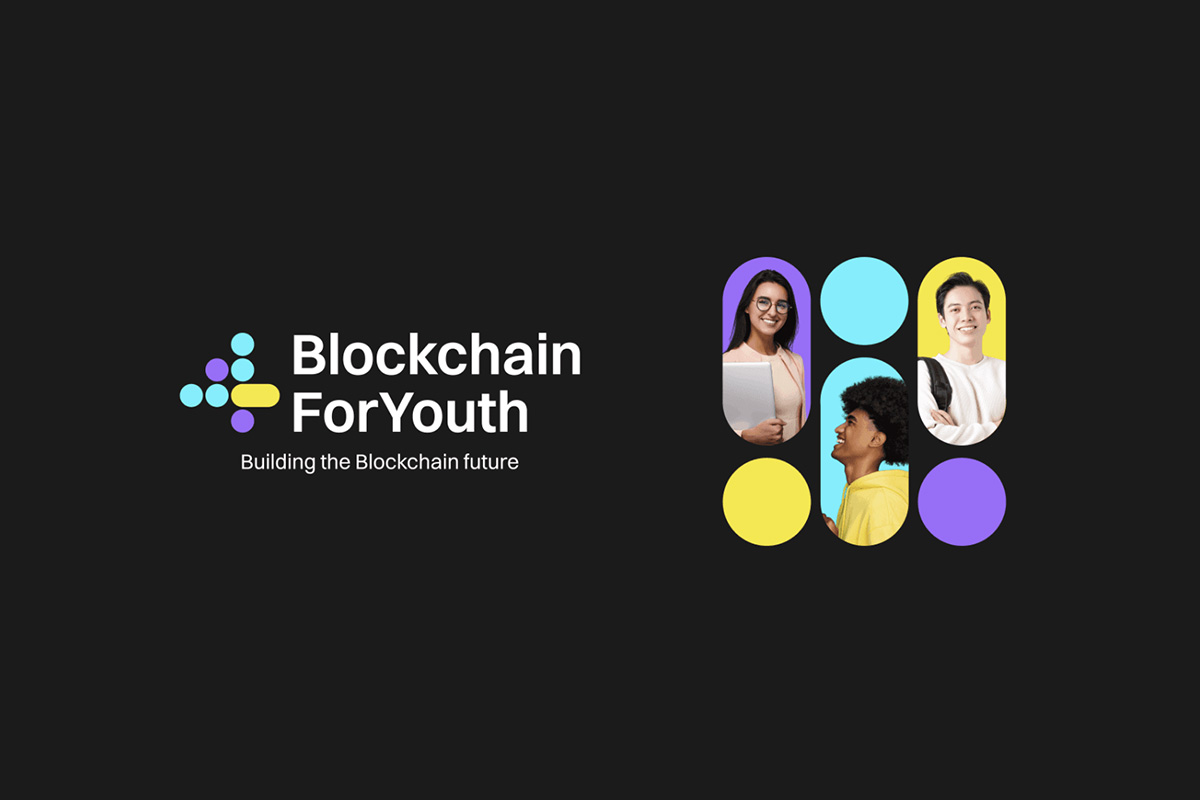
Bitget, società Web3 e uno dei principali exchange di criptovalute, ha ottenuto un riscontro significativo in occasione del recente hackathon “Build with AI”, tenutosi dal 2 al 5 maggio 2025 presso la Constructor University. Spingendosi oltre la semplice sponsorizzazione, l’iniziativa Blockchain4Youth di Bitget ha coinvolto attivamente più di 130 studenti di talento.
L’evento, organizzato dai Google Developer Groups (GDG) on Campus, ha offerto a Bitget uno spazio dinamico per entrare in contatto diretto con gli innovatori tecnologici di nuova generazione. Nel corso di una presentazione dedicata, è stato introdotto il programma Blockchain4Youth Builder, che mostra l’impegno di Bitget nel formare giovani talenti all’interno dello spazio del Web3. Questa partecipazione evidenzia l’approccio lungimirante di Bitget nell’integrare la formazione in materia di blockchain con i settori emergenti come l’IA, riconoscendo il loro potenziale combinato.
Gli studenti hanno lavorato alla creazione di modelli basati sull’IA e di prodotti in fase iniziale utilizzando gli strumenti avanzati di Google, mentre la presenza di Bitget ha offerto una prospettiva unica su come la blockchain possa migliorare ed essere integrata nelle soluzioni di IA. Questa interazione con il mondo reale ha fornito preziose indicazioni agli studenti, colmando il gap tra conoscenze teoriche e applicazione pratica all’interno del panorama tecnologico in rapida evoluzione.
“La formazione rimane un principio fondamentale della nostra missione e, attraverso iniziative come Blockchain4Youth, intendiamo fornire alle nuove generazioni le competenze necessarie non solo per esplorare, ma anche per plasmare attivamente questo settore dinamico”, ha commentato Vugar Usi Zade, COO di Bitget. “Collaborare con comunità come il Google Developer Group offre una base preziosa per connettersi con talenti di spicco e aiutarli nel percorso di utilizzo della blockchain per creare soluzioni di impatto. Blockchain4Youth continuerà a espandere la sua portata, favorendo la crescita dei futuri leader del Web3 in grado di cogliere le numerose opportunità offerte da questa tecnologia”.
Il coinvolgimento mostrato all’hackathon “Build with AI” di GDG è un elemento chiave del più ampio programma Blockchain4Youth di Bitget, l’iniziativa aziendale dedicata alla Responsabilità Sociale d’Impresa (RSI). Questo programma mira a favorire la prossima generazione di leader Web3 attraverso opportunità formative ed esperienze pratiche.
Tra le iniziative più recenti del programma Blockchain4Youth c’è il lancio del Graduate Program di Bitget, concepito per reclutare i migliori laureati nel settore blockchain e Web3. Inoltre, l’espansione del programma Bitget Builders continua a fornire agli individui più promettenti del Web3 un’esperienza diretta attraverso gli eventi offline, i programmi formativi e la crescita strategica della community.
A proposito di Bitget
Fondata nel 2018, Bitget è una società Web3 tra i principali exchange di criptovalute al mondo. Con oltre 100 milioni di utenti in più di 150 Paesi e aree geografiche, l’exchange Bitget si impegna ad aiutare gli utenti a fare trading in modo più smart con la sua pionieristica funzione di copy trading e altre soluzioni di trading.
The post Bitget Blockchain4Youth sostiene l’innovazione del Web3 e dell’IA all’hackathon “Build with AI” di Google Developer Group appeared first on News, Events, Advertising Options.
Blockchain
India’s Fintech Market to Reach $990 Billion by 2032 at 30.2% CAGR – Fintech Firms Eye Untapped Indian Digital Payments Market with Secure, Low-Cost Digital Financial Solutions
Blockchain
Blocks & Headlines: Today in Blockchain – May 9, 2025 | Robinhood, Solana, Tether, China, Women in Web3

Today’s blockchain landscape pulses with innovation, expansion and strategic jockeying. From established trading platforms laying the groundwork for international tokenized US asset markets to fresh efforts empowering women in Web3, the industry is evolving at frantic pace. Solana-based tokenization pathways, China’s state-driven blockchain masterplan and Tether’s push onto new Layer-1 rails further underscore diversification. In this daily op-ed, we unpack five major developments—examining what they mean for DeFi growth, NFT marketplaces, regulatory contours and the ongoing quest for greater inclusivity in crypto.
1. Robinhood’s European Blockchain Trading Ambitions
News Summary
Robinhood Markets Inc. is reportedly constructing its own blockchain infrastructure to facilitate trading of U.S. equities and other assets in European markets. Insiders suggest the project seeks to leverage distributed-ledger technology for settlement efficiency, near-real-time clearing and reduced reliance on legacy central counterparties. The move signals Robinhood’s ambition to transcend its domestic brokerage roots and capture European retail and institutional order flow.
Key Details
-
Infrastructure Build: A private, permissioned ledger governed by Robinhood and selected counterparties.
-
Asset Scope: U.S. equities, ETFs and potentially tokenized debt instruments.
-
Regulatory Interface: Engagements with the U.K. Financial Conduct Authority (FCA) and European Securities and Markets Authority (ESMA) to align on custody and market-making rules.
-
Timeline: Internal pilots slated for Q4 2025, with public rollout in mid-2026.
Analysis & Opinion
Robinhood’s pivot underscores a broader industry trend: exchanges and brokerages striving to “own the rails” rather than simply interface with existing clearinghouses. By internalizing settlement on a bespoke blockchain, Robinhood hopes to slash settlement times from T+2 to near-instant, a boon for liquidity providers and high-frequency traders. However, risks include the complexity of cross-border regulatory compliance and the operational challenge of maintaining robust on-chain and off-chain reconciliations.
From a DeFi convergence standpoint, Robinhood’s ledger could bridge traditional and decentralized finance, enabling tokenized margin lending and programmable corporate actions directly on-chain. Should Robinhood open permission to DeFi protocols, we may witness new hybrid liquidity pools that blend CEX order books with AMM liquidity. This would mark a milestone in mainstream DeFi adoption—and potentially pressure incumbents like Nasdaq to innovate their own on-chain settlement layers.
Source: Bloomberg
2. Women in Web3: Cultivating Greater Gender Diversity
News Summary
A recent deep-dive from Cointelegraph spotlights the persistent gender gap in blockchain and crypto. Despite Web3’s ethos of decentralization, women represent less than 20 percent of crypto investors and under 10 percent of core development teams. The article outlines initiatives—from targeted grants and incubation programs to mentorship networks—aimed at lowering barriers and attracting more female talent.
Key Details
-
Current Statistics: Women account for approximately 17 percent of crypto traders globally; in development, the share dips below 8 percent.
-
Notable Initiatives:
-
Women in Blockchain Fund: USD 50 million allocated for early-stage female founders.
-
Global Web3 Sisters Network: Mentorship platform pairing novices with veteran executives.
-
University Partnerships: Scholarships for women studying blockchain engineering and cryptography.
-
Analysis & Opinion
Web3’s promise of equal-opportunity innovation rings hollow if half the population remains sidelined. Heightened grant funding and mentorship can help, but systemic change requires cultural shifts within DAOs, core teams and investor circles. Projects and protocols must adopt policies—like blind code reviews, diversity hiring quotas and inclusive governance frameworks—to ensure sustainable participation.
Moreover, as the industry grapples with regulatory scrutiny, diverse leadership can foster better risk management and community trust. Women leaders have often been at the forefront of compliance, ethics and consumer protection—even in traditional finance—qualities sorely needed in crypto’s maturing phase. Token projects that embed gender-diverse advisory boards may see stronger reputational profiles and wider community buy-in.
Source: Cointelegraph
3. SOL Strategies: Tokenizing Shares on Solana
News Summary
SOL Strategies, a financial-services startup, is exploring a pathway to tokenize private and publicly traded shares on the Solana blockchain. Their recently filed whitepaper proposes a framework where equity is represented as SPL tokens, enabling fractional ownership, 24/7 trading and programmable dividend distributions.
Key Details
-
Token Standard: Extension of Solana Program Library (SPL) with “Equity Token” schema.
-
Custody Model: Licensed custodian holds underlying shares; token holders have legal claim via smart-contract link.
-
Compliance Layer: On-chain KYC/AML middleware to restrict token transfers to approved wallets.
-
Pilot Partners: Early engagements with two mid-cap European tech firms eyeing capital-raising via tokenization.
Analysis & Opinion
Tokenized equity stands to revolutionize capital markets by lowering minimum investment thresholds and unlocking global liquidity. On Solana, with its sub-second finality and low fees, fractional shares could trade seamlessly—outpacing Ethereum’s scalability challenges. Yet the critical hurdle lies in regulatory acceptance: will securities regulators view these tokens as bona fide equity or as unregistered securities?
SOL Strategies’ integrated custody approach could mollify regulators, replicating existing T+2 standards while enabling T+0 settlement on-chain. Should they secure regulatory sandbox approvals in the U.K. or Singapore, other blockchains—like Stellar and Polkadot—may race to develop similar tokenization toolkits. For DeFi protocols, tokenized equities could become collateral in lending pools, further intertwining traditional and decentralized finance.
Source: Newsfile Corp.
4. China’s Blockchain Playbook: Infrastructure, Influence & New Frontiers
News Summary
The Center for Strategic and International Studies (CSIS) published an extensive analysis of China’s state-driven blockchain strategy. Beyond its digital yuan rollout, Beijing is investing in cross-border infrastructure, influencing global standards bodies and forging Belt and Road blockchain corridors across Asia, Africa and Latin America.
Key Details
-
Key Initiatives:
-
BSN 2.0: Blueprint for national and international consortium chains.
-
International Standards: Active lobbying in ISO/TC 307 for governance models favoring state-actors.
-
Tech Diplomacy: Blockchain MOUs with Pakistan, Indonesia and several African union members.
-
-
Strategic Goals: Extend digital yuan acceptance, export Chinese ledger tech, shape global governance.
Analysis & Opinion
China’s multi-pronged approach signals blockchain’s emergence as a theater of geopolitical competition. By undercutting SWIFT dependency and offering turnkey consortium-chain solutions, Beijing enhances its financial influence in Belt and Road countries. Western governments and multinationals must navigate this blockchain bifurcation—between open public rails and permissioned state-backed consortia.
For crypto projects, the CSIS report offers both caution and opportunity. While the digital yuan may corner state-aligned corridors, decentralized networks remain resilient by design. Projects focusing on interoperability—such as Polkadot bridges and Cosmos IBC—can link fragmented chains and preserve open value transfer. Investors should monitor on-chain metrics in emerging markets, as Chinese-backed consortium chains gain traction in cross-border trade finance.
Source: CSIS
5. Tether Expands Stablecoin Reach to 196 Million Users via Kaia
News Summary
Tether has launched USDT on the Kaia blockchain, bringing its flagship stablecoin to Kaia’s user base of approximately 196 million. Kaia, a burgeoning Layer-1 optimized for high-throughput mobile applications, opens new corridors for USDT in gaming, remittances and micro-trading in emerging markets.
Key Details
-
Technical Integration: USDT issued as a native Kaia token, supported by Tether’s reserve-backing audit framework.
-
User Impact: Near-zero fees for micro-transactions; sub-second confirmation times even on mobile networks.
-
Partnership Scope: Integration with Kaia’s wallet SDK and gaming marketplace; joint launch of an educational DApp for fiat-on-ramp literacy.
Analysis & Opinion
By deploying on Kaia, Tether diversifies its blockchain footprint beyond Ethereum, Tron and Solana, underscoring a multi-chain thesis for stablecoin ubiquity. Emerging-market users—often plagued by volatile local currencies—stand to benefit immensely from a mobile-first, low-cost remittance rail. Moreover, Kaia’s developer incentives may spawn DeFi lending dApps collateralized by USDT, fueling localized credit markets.
Yet healthy competition among blockchains for stablecoin volume could concentrate risk: reserve transparency, network stability and regulatory compliance will differentiate winners. Tether’s public attestations and reserve audits are critical, but as US regulators intensify scrutiny on stablecoin giants, projects deploying on smaller chains may face fresh legal complexities around money-transmission licensing.
Source: Bitcoin.com
Conclusion & Key Takeaways
-
Institutional On-ramp Acceleration: Robinhood’s European chain signals major brokerages view blockchain as core infrastructure—not mere gadget.
-
Inclusivity Imperative: Women’s underrepresentation remains a blindspot; targeted grants and cultural reforms are needed for equal Web3 participation.
-
Tokenization Tide: Solana’s high-speed rails may host the next wave of equity tokens, bridging capital markets and DeFi.
-
Geopolitical Battlegrounds: China’s consortium chains and digital-yuan corridors illustrate how blockchain is reshaping global influence.
-
Stablecoin Multichain Strategy: Tether’s Kaia integration reflects the logic of diversifying rails to reach underserved, mobile-first users.
As blockchain advances, the interplay between technological innovation, regulatory frameworks and social inclusion will define whether the next chapter of crypto fulfills its vision of open, equitable finance—or replicates old hierarchies in digital garb. Today’s headlines underscore that the path forward lies in cross-chain interoperability, proactive policy-shaping, and a relentless focus on broadening the community that stewards and benefits from these transformative networks.
The post Blocks & Headlines: Today in Blockchain – May 9, 2025 | Robinhood, Solana, Tether, China, Women in Web3 appeared first on News, Events, Advertising Options.
-

 Blockchain Press Releases3 days ago
Blockchain Press Releases3 days agoHTX Premieres USD1 Stablecoin Globally, Partnering with World Liberty Financial to Forge a New Era of Decentralized Economy
-

 Blockchain6 days ago
Blockchain6 days agoUnitedStaking.com Launches Advanced Crypto Staking Platform with Global Reach and Real-World Impact
-

 Blockchain Press Releases3 days ago
Blockchain Press Releases3 days agoJuCoin made a global impact at TOKEN2049 Dubai, advancing its ecosystem with the “Peak Experience” vision and JuChain’s robust tech.
-
Blockchain2 days ago
Colb Asset SA Raises $7.3 Million in Oversubscribed Round to Bring Pre-IPO Giants to Blockchain
-

 Blockchain2 days ago
Blockchain2 days agoBlocks & Headlines: Today in Blockchain – May 7, 2025 | Coinbase, Riot Games, Curve DAO, Litecoin, AR.IO
-

 Blockchain Press Releases2 days ago
Blockchain Press Releases2 days agoGRVT Launches Biggest Ever Trading Competition for Retail Traders, Offering Up to 175,000 USDT in Prizes
-

 Blockchain Press Releases2 days ago
Blockchain Press Releases2 days agoCango Inc. Maintains Strong Mining Efficiency and Expands Bitcoin Holdings Amidst April Production Shift
-

 Blockchain Press Releases1 day ago
Blockchain Press Releases1 day agoHTX and Justin Sun Launch $6M Mars Program Special Edition, Offering One User a Historic Space Journey






